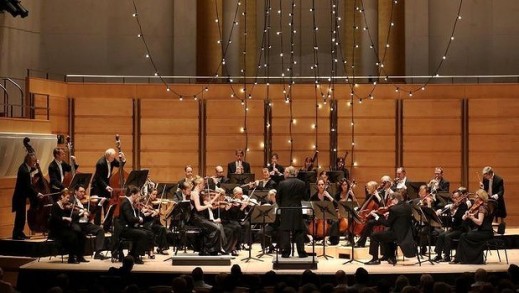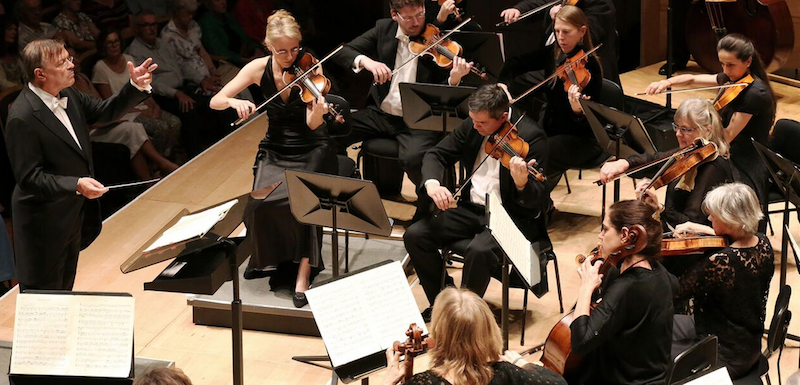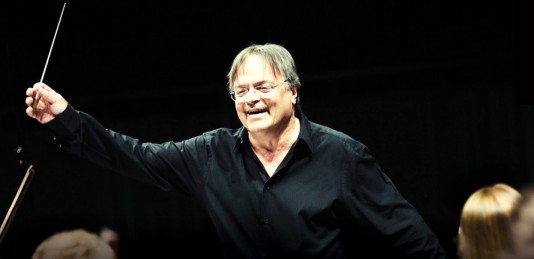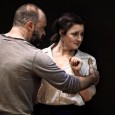A program of Beethoven symphonies too often gives modern orchestras an excuse to really blast and shake the concert hall rafters. After all, Beethoven’s symphonies are full of pile-driving riffs and slammin’ power-chords.
It’s all very exciting – as any heavy metal is – but sometimes it is a little overweight and overblown. Power is power, but force is only force.
Belgian orchestra Amina Eterna Brugge have made a name performing these landmark symphonies on period instruments – yes, what you are hearing is what Beethoven would have heard (that is, of course, until he went deaf). And their interpretations are a revelation and a beautiful beautiful thing. I was there for their performance of the 6th and 5th Symphonies (in that order) as part of the 40th Sydney Festival.
I am still kicking myself for not being there for their entire Beethoven series, and will be for weeks.
Anima Eterna mainman, Jos van Immerseel, pulls some wonderful dynamics out of the music and his players. Like a calm captain he steers the ensemble steadily through this exquisite music, easily gesturing for this mood or that, rather than flailing at and attacking the material.
The period instruments give the symphonies a sense of a wider and often deeper range of dynamics, as one’s ear tends to bend inward towards the music. The oboes and bassoons seem to be in higher relief against the strings, the brass blasts seem more burnished and the wooden flutes and period clarinets are rounder in tone, more pearly. The lovely ‘birdsong’ after the ‘Storm’ movement in the 6th Symphony (4th movement, Allegro) allowed these flutes and clarinets to drop their tonal pearls into the air of the City Recital Hall, beautifully.
Which is not to say the Anima Eterna ensemble can’t project power: the fidgety child in front of me almost jumped out of her skin when the timpani and brass exploded their sturm und drang during the above ‘Storm’ movement.
Their Sixth (‘Pastoral’) Symphony was the perfect paean to a particularly German nature-love/worship, which verges, as in Wagner, on the pagan. Beethoven’s expression of being in and amongst Nature blurs with the spiritual as it hymns the power and ecstasy of the natural world. Beethoven wrote on the score “Mehr Ausdruck von Empfindung als Malerei”/”More and expression of feeling than painting”: that is, more his feeling of losing oneself in Nature than a simple tone poem description.
 The woodiness and the natural ‘breathing’ of the Anima Eterna Brugge allowed an organic quality to enrich the music – which could not have been more perfect for this anthem to nature.
The woodiness and the natural ‘breathing’ of the Anima Eterna Brugge allowed an organic quality to enrich the music – which could not have been more perfect for this anthem to nature.
The Fifth Symphony crackles with ideas and the orchestra crackled with energy to match them.
The Fifth is built architecturally and organically around one musical motif, one which Beethoven associated with fate and destiny.
The Anima Eterna’s reading moved the movements all forward with a sure propulsion and momentum, with no energy dissipated carelessly. Lean and mean.
Force is only force, and power is power. The more human scale dynamic of period instrument ensembles is always a plus when listening to orchestral music – witness our own remarkable Australian Brandenburg Orchestra under Paul Dyer.
Jos van Immerseel and the Anima Eterna Brugge proved this yet again, and in doing so revealed maybe something of Beethoven the man as against the often overblown and, sometimes, robotic titan.





